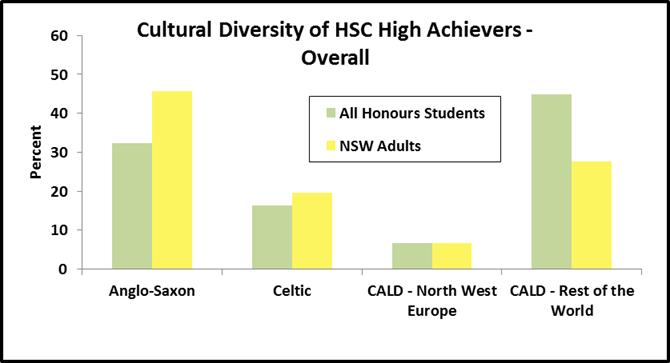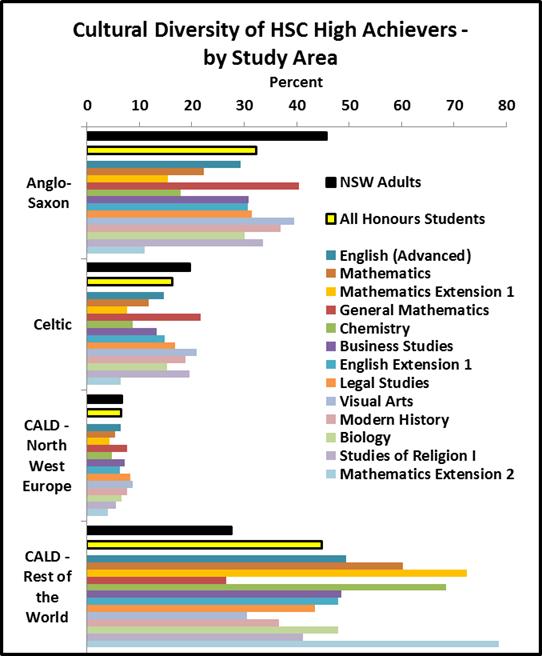Cultural Dimensions of NSW High Performing Students
In New South Wales (NSW), the Higher School Certificate (HSC) is the culmination of a two-year study program to conclude secondary school education and provide a sorting and scoring mechanism for use by various tertiary institutions when selecting students for their courses.
Each student receives a score for each study area they choose. Any student achieving a score of 90 or more in any particular study area is added to the ‘Honour Roll’. Of course, any one student doing well in several subjects can achieve multiple entries on the honour roll.
In September 2014, OriginsInfo worked with Fairfax Media to analyse the honour roll for those students who completed HSC in 2013. The honour roll is published in the media and Fairfax Media obtained the honour roll from BOSTES, the NSW authority responsible for student assessment. All students are published in the roll except for a small number who specifically request for this not to occur. Fairfax Media published its findings and associated articles in December 2014 (see Asian Students More Likely to be in HSC Honours List and Top ATAR, HSC Performances the Result of Years of Achievement).
A total of 15,146 NSW students achieved at least one honours score in 2013. We were interested to understand the cultural dimensions of those students achieving honours. Do students from all cultural backgrounds perform equally well in placing on the honour roll? How does this vary by study area?
Measuring Cultural Diversity
The challenge that many organisations face in collecting appropriate data on cultural diversity is discussed in some depth in a previous edition of OriginsInsight .
OriginsInfo uses a robust name analysis methodology to infer the most likely cultural origin of a particular name combination. Four pieces of validation work support the claim for around 85% accuracy at the individual level, when coded to Origins Type categories. Click for further information.
With the NSW honour roll, we processed the names of 15,146 students and allocated each to one of 257 Origins ‘CEL’ codes to reveal the most likely cultural origin of that name combination. For practical purposes, we grouped the 257 Origins categories into a smaller number of categories – Anglo-Saxon, Celtic, CALD1 – North West European, and CALD – Rest of the World.
Where statistically relevant we draw attention to particular features at a more detailed level.
We compared the proportion of honours students in those categories with the proportion of the NSW adult population in the same categories. This approach was validated through an analysis of census data by single age group which revealed that there was a general alignment between the cultural mix of the HSC cohort (aged 14-16 in the census year of 2011) and the adult population. This analysis revealed that here was no substantial impact on the key messages presented in this paper in using the adult population as a base for comparison.
Results
When looking at the overall composition of high achieving students (see Chart), there are four key messages:
- Students of an Anglo-Saxon heritage are significantly under-represented
- Celtic (mainly Scottish and Irish) are under-represented but not to the same extent
- CALD – North-West European heritage students are very close to parity
- CALD – Rest of the World students are massively over-represented, comprising 47.8% of all honours students compared with 27.6% in the wider NSW adult population

